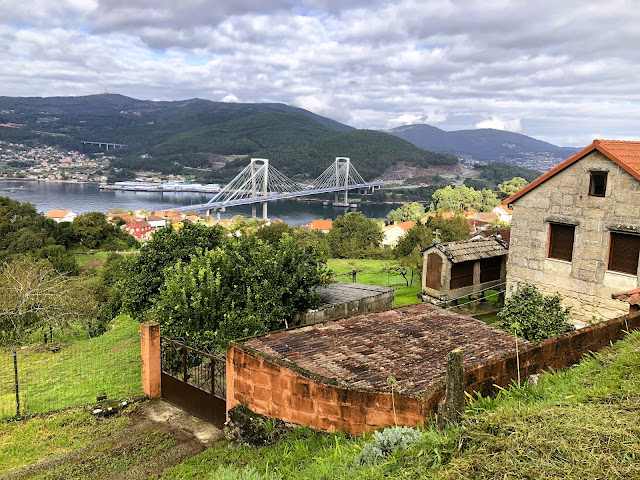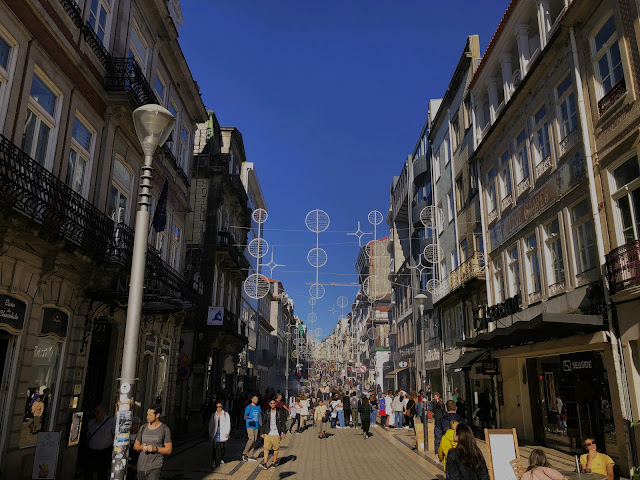EUROPE – PART 9
Our sea day between Hamburg and Amsterdam turned out to be a lie-in-bed-so-you-don’t-toss-your-cookies kind of day! The MS Spitsbergen pitched, rolled, slammed, and shuddered for the best part of 24 hours. By the end of this cruise, we’ll have been on ships for 313 days by my count and have only been cabin-bound twice so far, but this storm was the worst we’ve experienced.
Finally on solid ground in Amsterdam, we hit the bricks early and wandered aimlessly around Old Town, a twenty-minute walk from the cruise terminal. Bicycles rule in this city and canals are as common as streets. The old houses lean precariously against one another and might fall down if they weren’t. The ones shown in the photo are seventeenth century and are not an optical illusion. Since Amsterdam was built in a swamp, the result is not surprising. The same thing could have happened in my home village of Wellington, originally called “Quagmire”!
While it’s tempting to look up when in Amsterdam, important things can be found when one looks down. We came across many brass markers like the ones shown in the photo below. These tell the sad story of one Jewish family who lived in a lovely Amsterdam house overlooking a canal before they were deported by the Nazis in 1942 and 1943. The markers state that all four were murdered at Auschwitz in December of 1942 and February of 1943. Ten percent of Amsterdam’s population was Jewish, and three quarters of Dutch Jews were murdered. While Anne Frank’s story may be the best-known, I found these markers just as poignant.
There are 2,500 houseboats moored more or less
permanently in the city’s canals, some of them of modern construction, others
converted canal boats like the one shown in the photo. After our morning walk,
we took a canal cruise, then went back into the city on foot. While Elva and
her friends shopped, I strolled through the red-light district, Zeedijk, a rather
tame neighbourhood, I thought. Maybe it livens up after dark when the snakes
and the old skunks come out! Amsterdam is one city we’d like to return to and a
longer visit to the Netherlands may be in the cards some year hopefully.
I’m disappointed to have missed the Normandy beaches
where Allied troops, including 14,000 Canadians, landed on D-Day, June 6, 1944.
As was the case with Vimy in World War I, it became a coming-of-age moment for Canada
as our soldiers stormed Juno Beach. By the end of the day, the 3rd
Canadian Light Infantry Division had penetrated farther inland than any other
landing force. While it’s easy to say that there will be another time, we’re
not getting any younger and northern France is a bit out of the way when it
comes to popular European destinations.
After a tedious and treacherous crossing of the Bay of Biscay, we landed in A Coruña, a city of 250,000 on the northwest coast of Spain. We couldn’t wait to get off the ship and onto solid ground. Fortunately, it was a sunny, warm Sunday morning and the locals were enjoying the day. Before lunch, we set out on foot and took in the beauty of the harbourside promenade which stretches an impressive 13 kilometers, and the lovely central square.
We were supposed to spend two days in A Coruña but fate intervened once again. Just as we were about to leave the ship for an afternoon excursion, a sharp-eyed crew member noticed that something wasn’t right with the gangway. Sure enough, it came crashing down to the dock, some fifteen feet below. Thank goodness no one was on it because there could have been serious injury or death to one or more passengers. Due to high winds and the orientation of the ship, she kept moving back and forth until, finally, the flimsy setup shown in the photos gave way.
Since the MS Spitsbergen couldn’t tie up safely in A Coruña, we sailed into the harbour of Ferrol, just around the corner along the Galician coast, and hoped for a better day. Next morning, we drove to our scheduled walking tour of A Coruña by bus and listened to our excellent guide describe the city and the Spanish region called Galicia. She told us that her people are more Celtic than Spanish and that their favourite musical instrument is the bagpipes! The streets of A Coruña made for a beautiful walk. At our first stop, a restaurant called Bonilla a la Vista, we had hot chocolate and churros. Except the hot chocolate wasn’t like anything we’d ever had before; it was hot melted chocolate you had to eat with a spoon as it cooled in the cup!
During our walk, we saw many beautiful façades like the one in the photo and a tasteful bronze statue of John Lennon in the city park, another reminder of how far The Beatles influence has extended. Finally, we stopped for a photo of Torre de Hercules, the world’s oldest lighthouse, built by the Romans in the first century AD, and a UNESCO World Heritage Site. By mid-afternoon, the wind was howling, and the waves were crashing against the shore. We watched as a large cruise ship of the German Aida line made her way into A Coruña harbour to take shelter there. We’re thankful not to be on the open sea and would rather stay here until this Atlantic nor’wester blows over.
On our second day in Ferrol, I set out on foot on my own while the girls did some shopping. Although I’m not a religious person, I love to visit churches. Saint Julian Cathedral is a beautiful building and I had it all to myself as I walked around and took in the grandeur of the place. The city, population 65,000 and traditionally an important shipbuilding center, has fallen on hard times, and it shows in the buildings I walked past in the downtown area.
After another rock-and-roll night at sea, we docked in Vigo, Galicia’s biggest city with a population of 500,000. We took an early afternoon bus tour to nearby Pontevedra. Although our guide was quite good, by this time, we’d heard enough about European cities to get the picture. Back in Vigo, Elva and I set out on a one-hour walk on our own; much more satisfying than following a group and listening to historical tidbits we’ll never remember. In the photo, Elva gets friendly with a street performer in Pontevedra.
Day 2 in Vigo dawned bright and balmy. We’d decided to join a more active group for a hike along the Portuguese Camino. Finding our way out of the city following the scallop-shell signs was easier said than done but Gerd, our expedition leader, had GPS as a backup. She also carried a knapsack-full of stuff: water, snacks, tea, a first aid kit and, amazingly, a portable stretcher! We had a great group, all of them younger than us, of course. The views from our hillside trail were awesome and the 18 kilometers went by easily. We stopped for a coffee at our destination and took a bus back into Vigo. A perfect day!
Porto was our first port of call in Portugal and the second-last on this eventful journey. The city’s metropolitan area is home to around 1.7 million people, is a major industrial and financial center, and is perhaps best known world-wide as the birthplace of port wine. The old part of the city, which lies near the mouth of the Douro River, is a UNESCO World Heritage Site. Our day began with another forgettable guided walk through the city center. Don’t get me wrong. The guides are very good, but I don’t really care which king married which queen and had which palace built for their daughter. Or that it took one hundred years to build the Bishop’s Palace!
Elva and I broke free and went off on our own, retracing our steps. We took our time and explored the bustling pedestrian streets and bought fresh figs at a stall in the immaculate market. I took a picture of salted fish there, a Portuguese specialty. The smell reminded me of times spent in the “lean” at the old Coop store in Wellington when I was a kid. Salt cod, stiff as a cedar roof shingle, was stored there year-round along with other bulk items, like the 45-gallon puncheon of molasses for customers wanting to fill their cruche. While we’re in Portugal, I intend to try the local salt cod dish, bacalao. Then, we had tea and coffee on a terrace, enjoying the sunny day, 24-degree temperature, and quiet time just the two of us. It’s interesting that the weather has warmed exactly one degree per day since we left Tromsø on October 21. Dinner that evening was a feast of shellfish and seafood prepared by Chef Tomasz and his excellent kitchen staff.




















No comments:
Post a Comment